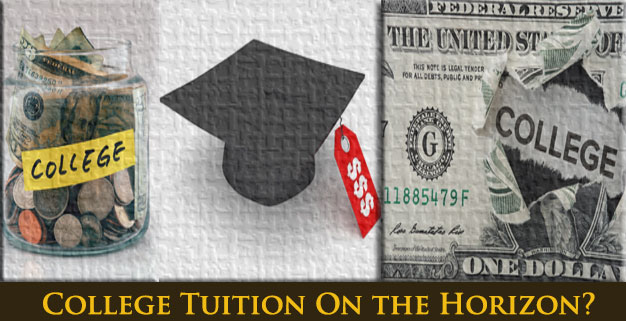
College Tuition On the Horizon?

New parents at some point begin to hear the phrase, “save for college education.” Yet many don’t pay that much attention to it, especially if little Junior is still crawling around on all fours. There’s plenty of time to think about college, they say. And it’s easy to let that very important financial aspect of their lives slip to the back burner. After all, being a new parent provides enough new responsibilities as it is. But time rolls on and when Junior is now in high school and looking at colleges, parents find themselves wishing they had paid more attention to a college savings plan and wonder how to pay for it.
There are options, and for those without some sort of formal college savings vehicle the first place they might look is their own IRA, 401(k) or other retirement savings. And of course there are always student loans. But many don’t realize there’s another option and it’s as plain as the roof over their heads-- a cash out refinance.
Retirement Funds
Tapping into retirement funds for college expenses is something any financial planner will tell you is a no-no. Yet it’s not uncommon for someone to have a retirement fund of some sort yet not a separate college fund. It’s also not uncommon for someone to not have enough in a retirement fund in the first place, not to mention paying for college.
Student Loans
College loans are an option but the current Stafford Loans, subsidized and unsubsidized, barely make a dent in today’s college cost environment. If student loans are the answer, then private student loans are the next choice.
Take a typical student loan rate from any bank, say 7.00% over 15 years and on a loan amount of $100,000. The monthly payment is $898 per month. Not something you necessarily expected to be paying each month for the next 15 years but without a college savings account, there really isn’t much choice. But let’s now look at a cash out refinance.
Cash Out Refinance
There are three main reasons to refinance an existing mortgage—reduce the interest rate, change the loan term or switch from a fixed to a hybrid or a hybrid to a fixed. If this applies to you, take the next step. In today’s interest rate environment, you can find a 30 year fixed rate right around 4.00%. On a $100,000 principal balance, the monthly payment is $477. That’s $421 lower than a student loan payment.
Now, here are some things to consider. A cash out refinance isn’t always the best option. For instance, if your current rate is less than market rate, it might not make sense. If you have a 30 year fixed rate of say 3.625% and market rates are 4.00%, which requires a bit more scrutiny. If your rate is 4.00% now and market rates are also 4.00%, you might still consider a cash out refinance. Yes, there are closing fees with any cash out refinance but your lender has ways to offset all or part of those loan fees.
If you have an adjustable rate mortgage or a hybrid, it’s time to get into a fixed rate anyway if you’re going to own the property for any length of time. Or, if you refinanced a few years ago into a 30 year fixed rate and you have 25 years left, there’s no reason to refinance into another 30 year loan. Instead, consider a 25 or even a 20 year cash out refinance. And one more thing— in most cases mortgage interest is a tax deductible item whereas student loan interest is not. As with anything involving your income taxes, speak with a tax professional regarding deductibility and how it affects your finances as well as where and how to place the college funds in a trust or life insurance policy. Your financial planner and accountant should be a part of this conversation, too.
If you’ve been wondering how to pay for college and not wanting to tap into your retirement savings, consider taking out a cash out refinance loan. There are really several advantages that other choices simply can’t match.